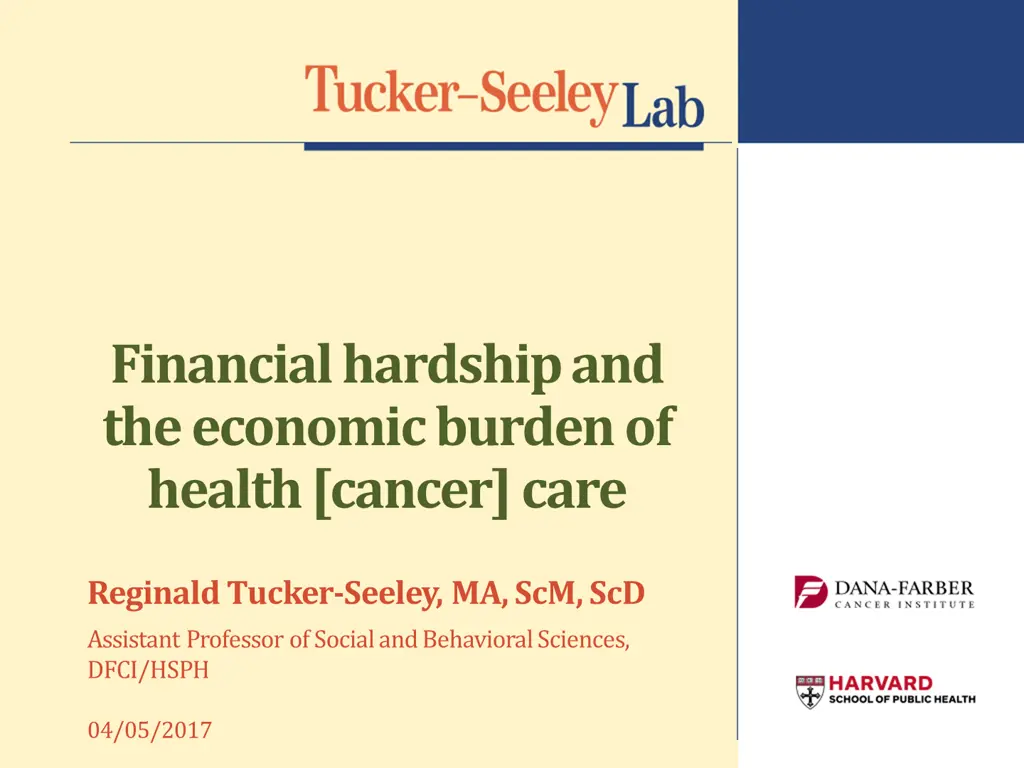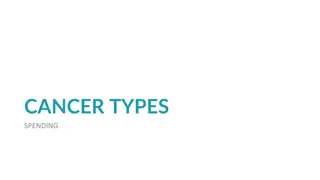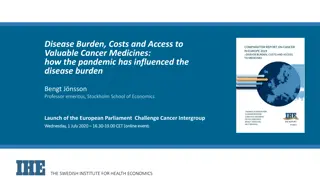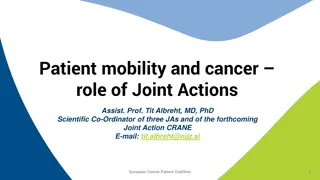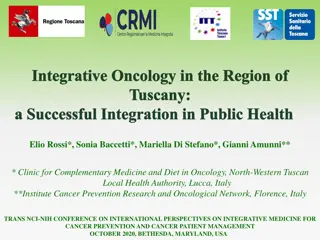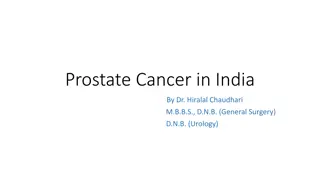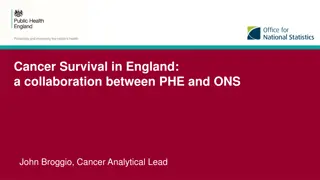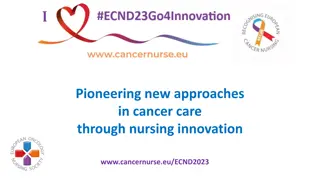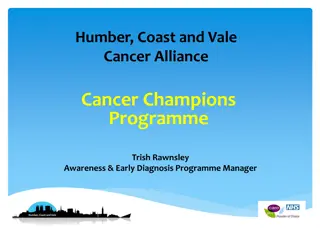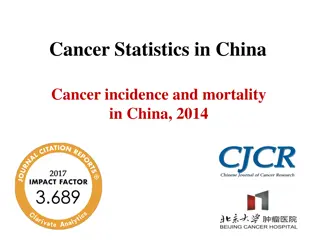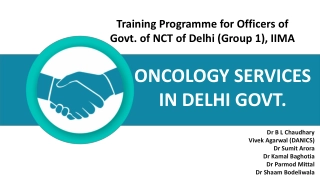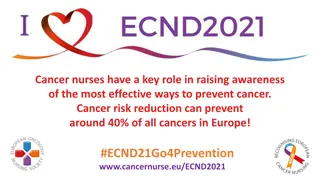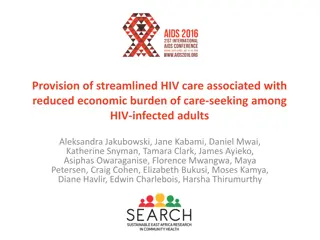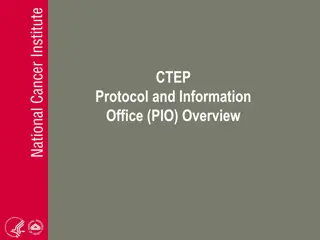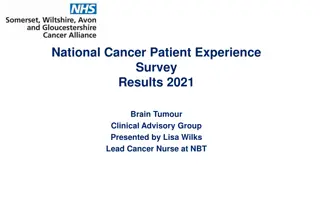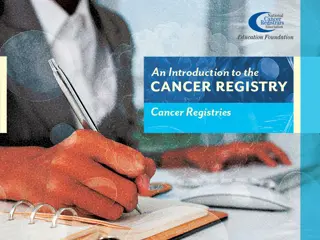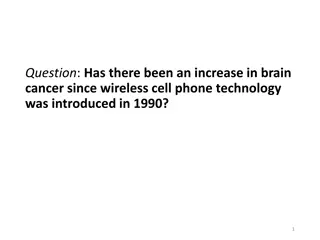Financial hardship and the economic burden of health [cancer] care
The financial hardships and economic burdens faced by individuals in cancer care, highlighting the impact of socioeconomic status and household financial insecurity. It also explores the association between financial hardship and various health outcomes.
- financial hardship
- economic burden
- health care
- cancer
- socioeconomic status
- household financial insecurity
- health outcomes
Download Presentation

Please find below an Image/Link to download the presentation.
The content on the website is provided AS IS for your information and personal use only. It may not be sold, licensed, or shared on other websites without obtaining consent from the author. Download presentation by click this link. If you encounter any issues during the download, it is possible that the publisher has removed the file from their server.
E N D
Presentation Transcript
Financial hardship and the economic burden of health [cancer] care Reginald Tucker-Seeley, MA, ScM, ScD Assistant Professor of Social and Behavioral Sciences, DFCI/HSPH 04/05/2017
Background Socioeconomic status is positively associated with health/health behavior Income, education, occupation (Adler and Newman, 2002; Braveman, et al, 2005)
Background Why traditional measures of socioeconomic status in population health research may be limited: Variability within groups Individuals within SES categories (e.g. low-income) may present a range of variation in individual vulnerability to the effects of adverse socioeconomic circumstances or changes to socioeconomic circumstances
Background Differential impact of SES across racial/ethnic groups Diminishing returns hypothesis Suggests that racial/ethnic minorities may not experience the same returns on increasing levels of SES as whites Minority poverty hypothesis Suggests a unique disadvantage for racial/ethnic minorities living in poverty
Household financial insecurity Household financial (in)security 17.8% report feeling economically insecure (Economic Security Index Project, Yale University); More than half (52 percent) of African-American and 56 percent of Latino seniors are economically insecure (Institute on Assets and Social Policy, Brandeis University); 44% of households nationally are living without a basic personal safety net (The Corporation for Enterprise Development (CFED)).
Differential savings among Medicare population
Background Financial hardship has been shown to be associated with several health outcomes: Intensive end-of-life care (Tucker-Seeley, et al. 2014) Oral health (Chi and Tucker-Seeley, 2013) Morbidity (Tucker-Seeley, et al. 2009; Kahn and Pearlin, 2006) Mortality (Tucker-Seeley, et al. 2009; Szanton, et al. 2008)
Background Rising cost of cancer care Cost of cancer rising faster than other diseases Total costs (direct costs of care for patient as well as the indirect costs of managing care by the household) are not usually known at the start of treatment and are not routinely discussed (IOM report, Levit, Balogh, Nass, and Ganz, 2013).
Financial Toxicity Several terms have been used to describe the financial consequences of managing cancer, such as financial burden, financial toxicity, financial hardship, and financial stress/distress. The relationship between cancer care and financial distress/toxicity is complex and related to a number of factors Source: https://www.cancer.gov/about-cancer/managing-care/financial-toxicity-hp-pdq
THE MONEY-HEALTH CONNECTION STUDY R21 CA158248 (NCI funded)
Money-Health Connection Study The purpose of the Money-Health Connection study is to develop a trans-disciplinary conceptual model of financial well-being (FWB) and to develop an assessment tool to measure this construct. Why is this necessary? Lack of conceptual clarity of FWB concepts financial hardship, financial strain, and in the cancer care context financial toxicity used interchangeably Lack of measurement clarity No consistent measure of these concepts
Example questions Material Conditions Making ends meet During the past 12 months, how much difficulty have you had in paying your bills? Psychological Response Financial worry How often do you worry about not meeting your expenses with your current income? Behavioral Coping Family resource management In past 12 months, because of the cost of care [since diagnosis], did you take less than prescribed amount of your medication? Did you skip doctor s appointments?
Implications for public health Better explication of the socioeconomic factors associated with health/health care across the life course Identification of potential intervention and policy targets Material Conditions (additional financial resources for specific household expenses) Psychological Response (stress reduction strategies) Behavioral Coping (financial literacy/education)
Conclusion/Summary If we are to effectively address socioeconomic disparities in health outcomes, it is critical that we improve our understanding of the material, psychosocial, and behavioral dimensions of household financial well-being that describe how individual socioeconomic circumstances are actually experienced, managed, and leveraged along the pathway to various health outcomes and health behaviors throughout the life course.
Acknowledgments Funding sources NCI: R21 CA158248 Dana-Farber Cancer Institute Tucker-Seeley research lab staff: Vanessa Boulanger (project director) Catherine Duarte (former research assistant) Melecia Miller (former research assistant) Margaret Katana (current research assistant) DF/HCC Cores Health Communications Core Survey and Data Management Core
